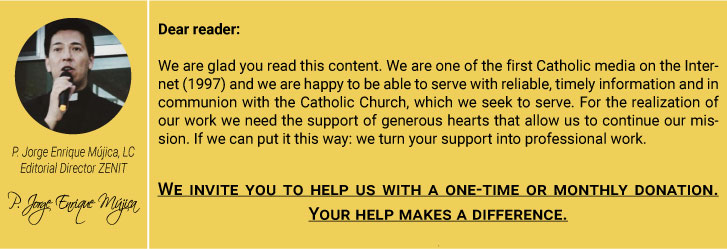Tomorrow morning, Pope Francis will mark start of his pontificate with the Inaugural Mass of the “Beginning of the Petrine Ministry of the Bishop of Rome” in St. Peter’s Square.
“In the past it was called the Pope’s enthronement, which might have been alright then, but not now, as he is not a king,” said Jesuit Father Federico Lombardi, director of the Holy See Press Office. Fr. Lombardi, who held a briefing today at the Holy See’s Media Center, was accompanied by Msgr. Jose Maria Gil Tamayo, the Spanish-speaking spokesman, and Fr. Thomas Rosica, the English and French-speaking spokesman.
As of now, delegations representing 132 countries will be present at the mass. Father Lombardi stressed “that the Holy See does not issue invitations, and anyone who wishes to attend can do so.” If a Head of States wishes to come he can do so.”
After the Mass, the leaders of the delegations will have the opportunity to greet Pope Francis in front of the main altar.
Prior to the Mass, the Holy Father will leave Domus Sanctae Marthae in the morning and will greet pilgrims either in the popemobile or a vehicle of his choice. Then, at 9:15 am he will go to the sacristy,which is near the statue Michelangelo’s Pieta, to prepare for the Mass there which will begin at 9:30 am.
The ceremony will begin at Saint Peter’s tomb, under the main altar, and will take place in the Square which, according to tradition, is where Saint Peter was martyred in what was then Nero’s Circus.
“From the sacristy, the Pope will go to Saint Peter’s tomb. Then he will go to the crypt under the altar accompanied by patriarchs, and some ten heads of Catholic Eastern Churches, four of whom are cardinals,” Fr. Lombardi said.
In the crypt will be the symbols the Holy Father will receive during the Mass: the ring of the Fisherman, the pallium and the book of the Gospels. They will then go up in procession to the door of the Basilica and go out to the square where the Mass will be celebrated.
At this time the “laudes Reges” litanies will be sung. “An interesting aspect is that many saints will be invoked, in particular saints who were Popes; the litanies end with Saint Pius X. Not invoked are the Blessed, who are so many,” Fr. Lombardi said.
“The pallium is the lamb’s wool that is placed around the chest and back. It signifies the Good Shepherd who seeks the lost sheep. It has red crosses because he gives his life for them, and they recall Christ’s wounds. The metropolitan archbishops also have the pallium, but with black crosses,” added Msgr. Gil Tamayo.
The Cardinal proto-deacon, Cardinal Jean Louis Tauran, who announced “habemus papam” last Wednesday, will invest the pallium on the Holy Father. It is identical to Benedict XVI’s. This will be followed by a prayer. The dean of the College of Cardinals, Cardinal Angelo Sodano, will then give Pope Francis the ring.
Also known as the Ring of the Fisherman, it is called thus “because Saint Peter was a fisherman; it recalls the biblical text of the miraculous catch when Jesus made him fisher of men. It will have the figure of Peter with the keys of the fisherman. It is the work of a famous Italian artist, Enrico Manfrini. It is made of silver plate,” Fr. Lombardi said.
The concelebrants will include all the cardinals who are in Rome, the Eastern patriarchs and archbishops who are not cardinals, the secretary of the College of Cardinals, two priests, and the generals of the Franciscans and the Jesuits. There will be no other concelebrants.
The ceremony will end with the promise of obedience, which will be made by six cardinals, one of each Order, although they already made this promise no sooner the Pope was elected. There will be no representatives from other ranks of the clergy, who instead will make the promise in “Saint John Lateran,” the Cathedral of Rome.
After these rites, the Mass will celebrate the feast of Saint Joseph, patron of the Church. There will be no readings related to the new Pope or the government of the Church.
On this occasion the Gospel will be proclaimed only in Greek. At Easter, for instance, the singing is in Latin and Greek, which represent the two dimensions of the life of the Church.
The offerings will not be taken in solemn procession, and the Pope will not distribute Communion personally. This will be done by deacons and 500 priests in Saint Peter’s Square. “Aspects of simplicity mean that the Mass will not be too long – some two hours, perhaps,” The Holy See Press Office director specified.
The singing will be done by the choir of the Pontifical Sistine Chapel, under Maestro Massimo Palombella, and by the Pontifical Academy of Sacred Music. Maestro Palombella pointed out that during the Offertory there will be music composed by Pierluigi de Palestrina for the occasion of a new pontificate. And it is called “Tu es pastor ovium,” you are the shepherd of the sheep. The Mass will end with the singing of the “Te Deum,” part in Gregorian and part polyphonic. There will be no Angelus as on Sundays.
On Wednesday, the Pope will receive the Christian delegations in the Clementine Hall. Among them will be top level representatives, such as patriarch Bartholomew, Catholic Armenian Karekin II and metropolitan Hilarion of the patriarchate of Moscow.
Attending the Mass also will be 16 members of the Jewish communities, including of the Rabbi of Israel, as well as a Muslim delegation, Buddhists and other creeds.
Pope Francis’ coat of arms will be the same episcopal coat of arms he had as archbishop of Buenos Aires.




